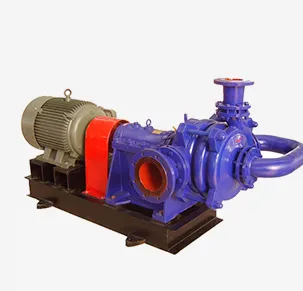English
- Afrikaans
- Albanian
- Amharic
- Arabic
- Armenian
- Azerbaijani
- Basque
- Belarusian
- Bengali
- Bosnian
- Bulgarian
- Catalan
- Cebuano
- Corsican
- Croatian
- Czech
- Danish
- Dutch
- English
- Esperanto
- Estonian
- Finnish
- French
- Frisian
- Galician
- Georgian
- German
- Greek
- Gujarati
- Haitian Creole
- hausa
- hawaiian
- Hebrew
- Hindi
- Miao
- Hungarian
- Icelandic
- igbo
- Indonesian
- irish
- Italian
- Japanese
- Javanese
- Kannada
- kazakh
- Khmer
- Rwandese
- Korean
- Kurdish
- Kyrgyz
- Lao
- Latin
- Latvian
- Lithuanian
- Luxembourgish
- Macedonian
- Malgashi
- Malay
- Malayalam
- Maltese
- Maori
- Marathi
- Mongolian
- Myanmar
- Nepali
- Norwegian
- Norwegian
- Occitan
- Pashto
- Persian
- Polish
- Portuguese
- Punjabi
- Romanian
- Russian
- Samoan
- Scottish Gaelic
- Serbian
- Sesotho
- Shona
- Sindhi
- Sinhala
- Slovak
- Slovenian
- Somali
- Spanish
- Sundanese
- Swahili
- Swedish
- Tagalog
- Tajik
- Tamil
- Tatar
- Telugu
- Thai
- Turkish
- Turkmen
- Ukrainian
- Urdu
- Uighur
- Uzbek
- Vietnamese
- Welsh
- Bantu
- Yiddish
- Yoruba
- Zulu
Telephone: +86 13120555503
Email: frank@cypump.com
Dec . 04, 2024 10:03 Back to list
sewage ejector pump replacement
Understanding Sewage Ejector Pump Replacement A Comprehensive Guide
Sewage ejector pumps are crucial components in residential and commercial plumbing systems, particularly for buildings located below the main sewer line. When the wastewater must be lifted to the level of the sewer line for proper disposal, an ejector pump comes into play. However, like any mechanical device, these pumps have a finite lifespan and will eventually need to be replaced. This article will help you understand the signs that indicate a need for replacement, the process involved, and maintenance tips to extend the life of your sewage ejector pump.
Signs Your Sewage Ejector Pump Needs Replacement
1. Frequent Failures If you find yourself repeatedly calling a plumber due to frequent breakdowns of your ejector pump, it may be time to consider a replacement. Consistent issues signal that the pump is nearing the end of its operational life.
2. Unusual Noises While some operational noise is normal, strange sounds such as grinding, clanking, or loud rumbling can indicate internal issues or wear and tear, suggesting a deteriorating pump.
3. Excessive Vibrations If your pump is vibrating excessively during operation, it could be unbalanced or misaligned. This not only decreases efficiency but can also lead to damage over time.
4. Decreased Performance A noticeable decrease in the pump’s efficiency—such as slow drainage or backup of wastewater—could mean it’s struggling to perform its basic function and may soon fail entirely.
5. Old Age Most sewage ejector pumps have a lifespan of around 7 to 10 years. If yours is approaching or exceeding this timeframe, it’s wise to consider replacement proactively before a major failure occurs.
The Replacement Process
Replacing a sewage ejector pump involves several steps and considerations
1. Evaluate the Existing Setup Start by assessing your current system. Understanding the type of pump installed, the size of the tank, and the plumbing configuration is critical before selecting a replacement.
2. Choose the Right Pump Replacement pumps come in various styles and sizes. Consider factors such as horsepower, flow rate, and head height (the vertical distance the pump needs to lift wastewater). Consulting with a plumbing professional can help ensure you choose a pump that meets your specific needs.
sewage ejector pump replacement

3. Prepare for Installation Before installation, shut off power to the pump and remove any debris around the area for easy access. It’s also advisable to have a backup system in place to prevent any unsanitary conditions during the replacement.
4. Installation Depending on your skill level, you may choose to install the pump yourself or hire a professional. Ensure that the installation complies with local plumbing codes. Proper sealing and connections are essential to prevent leaks.
5. Test the System Once the new pump is installed, test the system to ensure everything functions correctly. Monitor it for any unusual sounds or performance issues during its initial operation.
Maintenance Tips to Prolong Pump Life
To minimize the chances of needing to replace your sewage ejector pump too soon, regular maintenance is key
- Inspection Periodically inspect the pump for any visible signs of wear or damage. Look for leaks, rust, or corroded parts.
- Cleaning Keep the pump and surrounding area clean. Regularly remove debris from the basin to ensure efficient operation.
- Check Valves Ensure that check valves are functioning as they should. A malfunctioning check valve can cause wastewater to flow back into the basin, straining the pump.
- Schedule Professional Maintenance Consider having a plumber conduct routine inspections and maintenance. They can identify potential issues before they become major problems.
Conclusion
Sewage ejector pump replacement might seem daunting, but understanding the signs of failure, the replacement process, and how to maintain your pump can make the task manageable. By keeping your system in good working order, you ensure that your plumbing operates efficiently and safely, preventing costly repairs and health hazards in the future. Always consult a professional if you’re unsure about any part of the process.
-
ISG Series Pipeline Pump - Chi Yuan Pumps | High Efficiency, Durable Design
NewsAug.01,2025
-
Advanced Flue Gas Desulfurization Pump with GPT-4 Turbo | Durable & Efficient
NewsJul.31,2025
-
ISG Series Vertical Pipeline Pump - Chi Yuan Pumps | Advanced Hydraulic Design&Durable Construction
NewsJul.31,2025
-
ISG Series Vertical Pipeline Pump - Chi Yuan Pumps | Energy Efficient & Low Noise
NewsJul.31,2025
-
pipeline pump - Chi Yuan Pumps Co., LTD.|High Efficiency&Low Noise
NewsJul.31,2025
-
ISG Series Vertical Pipeline Pump - Chi Yuan Pumps Co., LTD.|High Efficiency, Energy Saving, Low Noise
NewsJul.30,2025










